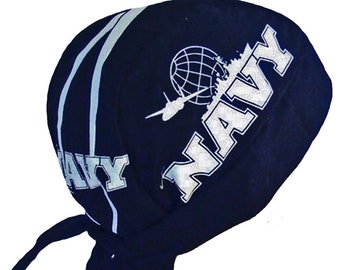

In 2001, however, the league owners voted 30–1 to ban players from wearing all headwear under helmets except for " skull caps" in what the league claimed was "a matter of image." Although there were concerns that the move may have been racially biased, the league again framed the ban as being originated by black members of their competition committee, including Denny Green. Ultimately, the league decided to take no action. In 1995, the National Football League (NFL) considered banning players from wearing " bandanas, known as do-rags." League executive Gene Washington said durags were associated with crime and gang violence but insisted that the idea was "driven largely by black people, not white people." Safety Merton Hanks said that he wore one because it made his helmet fit better and was therefore akin to safety equipment. Kvarforth, frontman of the Swedish depressive suicidal black metal band Shining, is known to wear a durag as part of his onstage look, in contrast to the corpse paint traditionally synonymous with black metal. The rapper Baby Keem, with a feature from Travis Scott, released a single in 2021 with the name "durag activity". In 2021, contestant Symone wore an outfit with a durag, which extended to a train, on the thirteenth season of RuPaul's Drag Race. The character of Leon Black on Curb Your Enthusiasm is famous for wearing his durag on the show. Rihanna wore a durag on the cover of the British Vogue, which marked a milestone of durags as seen as a fashion symbol. Rapper Royce da 5'9" has a song on the 2020 album The Allegory entitled "Rhinestone Doo Rag". The durag referenced has a pattern taken from popular Japanese television cartoon Dragon Ball. The lyrics references the headwear as the title piece to impress women. The 1974 song " Uncle Remus," cowritten by Frank Zappa and George Duke, includes the lyric, "I can't wait till my Fro is full-grown / I'll just throw 'way my Doo-Rag at home." Īmerican singer and bassist Thundercat's album It Is What It Is features the song entitled "Dragonball Durag". The popularity of rappers such as A$AP Ferg and the waves hairstyle have re-popularized the use of durags. In the 1990s, durags were further popularized by rappers like Jay-Z, Nelly, and 50 Cent. In the 1930s, during the Harlem Renaissance and Great Depression, the durag was used to maintain hairstyles.ĭuring the black pride movement of the 1960s and '70s, durags became a fashion statement. The Merriam-Webster online dictionary places the earliest usage of do-rag in 1968. processed hair done up in black rags" appeared in Newsweek. On September 2, 1966, the Dayton Daily News printed "the man with the black dew rag.a cloth band worn around the forehead as a sweatband or to keep hair in place". On June 4, 1966, the Akron Beacon Journal printed "do rag .In the August 27, 1965, edition of LIFE magazine, a page 22 photo caption describes a man wearing a "'do-rag' on his new hair-do".An alternative etymology claims that name should be spelled dew-rag, and dew is a euphemism for sweat. However, one writer in The New York Times claims that the correct spelling of the word is durag. The simplest etymology for do-rag is that it is named as such because it is a rag worn to protect one's hair do. Numerous alternative spellings exist for durag, including do-rag, dew-rag, and doo-rag, all of which may be spelled with a space instead of a hyphen, or with neither a hyphen nor a space especially as durag. Durags are also worn as an identity-making fashion choice, popular in African-American culture.

Durags may be worn to accelerate the development of long curly/kinky hair, waves or locks in the hair to maintain natural oils in hair (similar to a bonnet) to stop hair breakage to manage hair in general or to keep hair, wave patterns and braids from shifting while sleeping.

American rapper Slim Thug wearing a duragĪ durag ( alternate spellings) is a close-fitting cloth tied around the top of the head to protect the hair similarly a wave cap is a close-fitting cap for the same purpose.


 0 kommentar(er)
0 kommentar(er)
